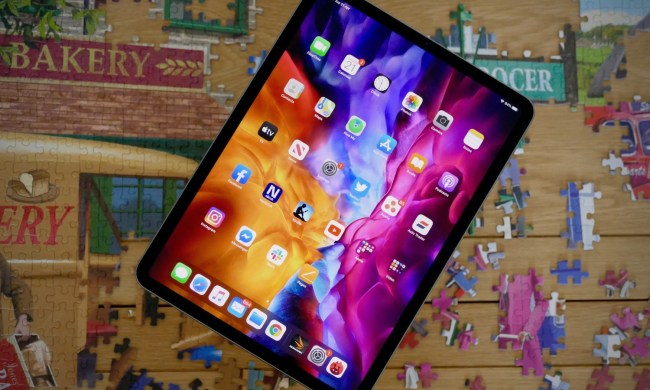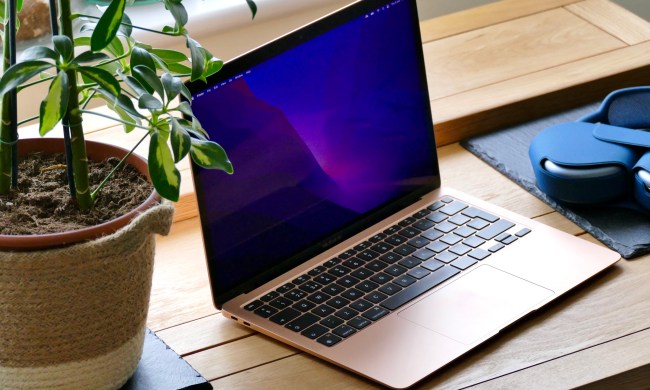The new iPad Pro (2021) is here, and while it doesn’t offer a new design, it has been revamped in a number of significant ways. Its most notable improvement is its formidable M1 chip, the same processor used by Apple in its recent MacBooks. On top of this, it also boasts a 12MP ultrawide selfie camera and 5G support, a first in an iPad.
However, as state of the art as it looks, interested parties may have a problem in deciding between the 12.9-inch iPad Pro and the 11-inch model. Both versions offer the same core features, but there are differences, as the 12.9-inch iPad Pro incorporates mini-LED technology in its display, plus a larger battery.
Of course, it’s also $300 more expensive than its smaller stablemate, so these enhancements may not be enough to sway you. That’s why we’ve pitted the two models against each other in a rigorous head-to-head comparison: The iPad Pro 12.9-inch (2021) versus iPad Pro 11-inch (2021). We examine their specs, designs, displays, performance, battery, cameras, software, and special features, and in doing so, we should hopefully help you decide which one you like the most.
If you’d like to look at some other iPad models, check out our article on the best iPad to buy in 2021.
Specs
| iPad Pro 12.9-inch (2021) | iPad Pro 11-inch (2021) | |
| Size | 280.6 x 214.9 x 6.4mm (11.05 x 8.46 x 0.25 inches) | 247.6 x 178.5 x 5.9mm (9.75 x 7.03 x 0.23 inches) |
| Weight | 682 grams (Wi-Fi), 685 grams (5G) (1.5 pounds) | 466 grams (Wi-Fi), 470 grams (5G) (1.03 pounds) |
| Screen | 12.9-inch Liquid Retina XDR mini-LED LCD | 11-inch Liquid Retina IPS |
| Screen resolution | 2048 x 2732 pixels (265 pixels per inch) | 1668 x 2388 pixels (~265 ppi density) |
| Operating system | iPadOS 14 | iPadOS 14 |
| Storage | 128GB, 256GB, 512GB, 1TB, 2TB | 128GB, 256GB, 512GB, 1TB |
| MicroSD card slot | No | No |
| Processor | Apple M1 | Apple M1 |
| RAM | 8GB, 16GB | 8GB, 16GB |
| Camera | Dual 12-megapixel and 10MP ultrawide, LiDAR, 12MP ultrawide front | Dual 12-megapixel and 10MP ultrawide, LiDAR, 12MP ultrawide front |
| Video | 4K at 60 fps, 1080p at 240 fps | 4K at 60 fps, 1080p at 240 fps |
| Bluetooth version | Bluetooth 5.0 | Bluetooth 5.0 |
| Ports | USB-C | USB-C |
| Fingerprint sensor | No | No |
| Water resistance | No | No |
| Battery | 40.88Wh
Fast charging (18W) |
28.65Wh
Fast charging (18W) |
| App marketplace | Apple App Store | Apple App Store |
| Network support | AT&T, T-Mobile, Verizon (Cellular models only) | AT&T, T-Mobile, Verizon (Cellular models only) |
| Colors | Silver, Space Gray | Silver, Space Gray |
| Price | $1,099+ | $799+ |
| Buy from | Apple | Apple |
| Review score | News | News |
Design, display, and durability

You may not be shocked to hear that the iPad Pro 12.9-inch (2021) and iPad Pro 11-inch (2021) sport what are essentially identical designs. Yes, the 12.9-inch iPad Pro is obviously bigger (and heavier), but in terms of their aesthetics, they are basically the same machine. That’s not necessarily a bad thing, since the edge-to-edge touchscreen and narrow bezels of each tablet look the business, and the aluminum frames and backs maintain the space-age chic with which iPad Pros are now almost synonymous.
There is, however, a noticeable difference when it comes to their displays. The iPad Pro 12.9 packs a Liquid Retina XDR display that utilizes mini-LED technology to provide a vivid image quality. Basically, the use of mini-LEDs means that the 12.9-inch model can fit more LEDs into its backlight, giving it not only greater brightness (1600 nits versus 600) but also deeper blacks and an impressive contrast ratio (1,000,000:1). Everything looks impressively rich and dynamic, and while the 11-inch’s screen offers the same number of pixels per inch (265), it can’t really compete with the vibrancy of its bigger sibling.
On the other hand, both iPad Pros are as durable as each other. Neither is water resistant, but they use scratch-resistant glass with an oleophobic coating, so it prevents greasy smudges from building up. Still, with the distinct advantage provided by its use of mini-LEDs, this opening round goes to the iPad Pro 12.9.
Winner: iPad Pro 12.9-inch (2021)
Performance, battery life, and charging

In a departure from previous generations, both the iPad Pro 12.9-inch (2021) and the iPad Pro 11-inch (2021) make use of the M1 chip. This is the processor you can find in the most recent MacBook Air, for example, and it really is one seriously capable piece of circuitry. Combined with the 8GB of RAM each iPad comes with as standard (or 16GB if you pay at least $700 more), the M1 will ensure that you can use all of the latest apps without experiencing any slowdown or lag, and then some.
Each iPad Pro (2021) starts with 128GB of internal memory, yet you can pay more to have models with 256GB (+$100), 512GB (+$300), 1TB (+$700), or 2TB (+$1,100). Neither offers room for a MicroSD card slot, although with judicious management and iCloud, you hopefully won’t need one.
Apple is always tight-lipped when it comes to battery sizes. That said, the 12.9-inch iPad Pro does appear to ship with a larger cell (40.88Wh versus 28.65Wh), so you may be able to get a bit more use out of it before needing to recharge. Then again, this extra capacity is likely to be used up by the 12.9-inch’s bigger and brighter screen, so we’re calling this round a tie.
Winner: Tie
Cameras

The iPad Pro 12.9-inch (2021) and the iPad Pro 11-inch (2021) both feature a dual-lens rear camera, with a 12-megapixel wide lens and a 10MP ultrawide lens, as well as a LiDAR sensor (for augmented reality applications). This is in line with the 2020 models, and while some may be disappointed by the lack of innovation, this setup is still among the best you can find on any tablet. It will take very good photos in most environments, and while it may not quite match the very best smartphone cameras, it will prove highly useful if you happen to find yourself in a camera situation without your iPhone or Android phone.
One new feature both models introduce is a 12MP ultrawide selfie camera. This is an intriguing addition, since it promises to help users take more scenic and panoramic selfies. This is helped by the use of the Center Stage feature, which harnesses artificial intelligence (A.I.) to ensure that you remain in the middle of a wide-angled picture.
Obviously, given that both models carry this new feature, this round is another tie.
Winner: Tie
Software and updates

The 12.9-inch and 11-inch iPad Pros both, unsurprisingly, operate using iPadOS 14. While the latter wasn’t perhaps as groundbreaking as iOS 14, it nonetheless provides a range of nice new features. This includes redesigned home screen widgets, App Clips, and Scribble, which lets you use the Apple Pencil (sold separately) to handwrite text into on-screen boxes and text fields.
Since both models are being released at the same time, you can be certain they’ll receive updates for the same length of time. This will very likely be for several years, meaning that both tablets are well and truly future-proofed.
Winner: Tie
Special features

The 11-inch and 12.9-inch iPad Pros are the first iPads to introduce the option of 5G support (if you go for the cellular model). Sure, you have to pay $200 more to get this feature, but you will be able to use the fastest mmWave 5G bands, as well as the longer-range sub-6Hz frequencies. As such, you’ll be able to download and upload media faster than 99% of the world’s population, assuming you’re close to a 5G network.
Other than 5G compatibility, there isn’t much else to report. Both models come with a LiDAR sensor, which facilitates the use of various augmented-reality apps (which still remain in fairly limited supply). As you can expect, both tablets also offer Face ID (for unlocking and purchases) and support the Magic Keyboard accessory, just in case you want your iPad to double as a laptop for work (which it’s certainly capable of).
Given that this is another round where both devices are identical, we have to declare another draw.
Winner: Tie
Price and availability
The iPad Pro 12.9-inch (2021) is available for pre-order now from Apple’s website, starting from $1,099 and rising to $2,229 if you want the 2TB version with 5G. It will be supported by all major networks and sold by pretty much every credible retailer.
Likewise, the iPad Pro 11-inch (2021) is also available to pre-order from Apple, although it starts from $799 and climbs to $2,099 for the 2TB model with added 5G support. Again, it will work on all major networks and be sold by any retailer that stocks tablets.
Overall winner: iPad Pro 12.9-inch (2021)

Admittedly, the iPad Pro 12.9-inch (2021) is better than the iPad Pro 11-inch (2021) in only one respect: Its display. By virtue of its use of mini-LEDs, it really does enable a more enjoyable viewing experience, with deeper colors and contrasts. Combined with the larger size, this is just about enough to give it a win, even if the two models are basically the same tablet in almost all other respects.
If you think that you’ll enjoy the 11-inch iPad Pro’s screen just as much without mini-LED technology, then it’s arguably the better option. It costs $300 less than the bigger model, yet it still runs on the powerful M1 chip, so it’s also the most powerful tablet you can buy right now. Not only that, but it offers the same versatile camera, the same near-flawless software, the same special feature, and the same support for 5G.



